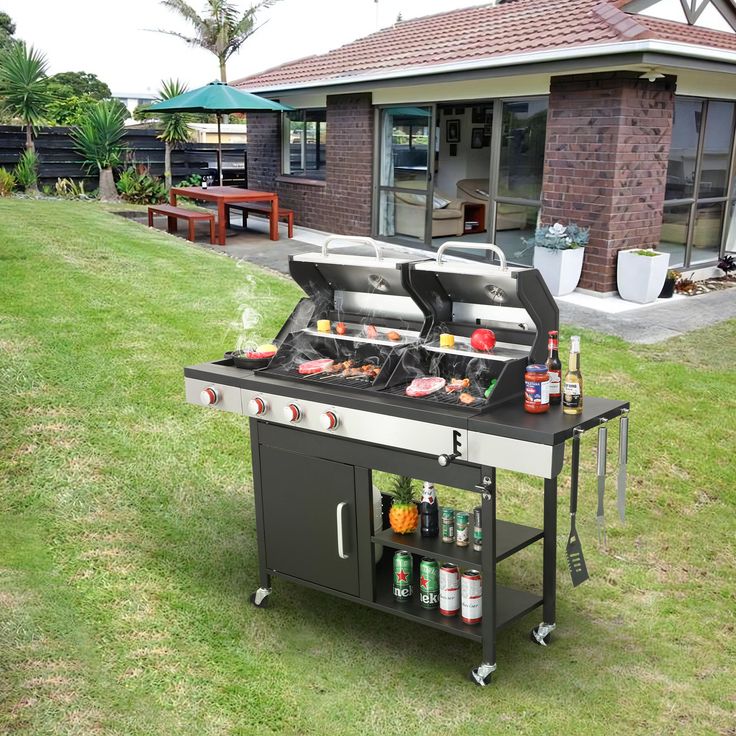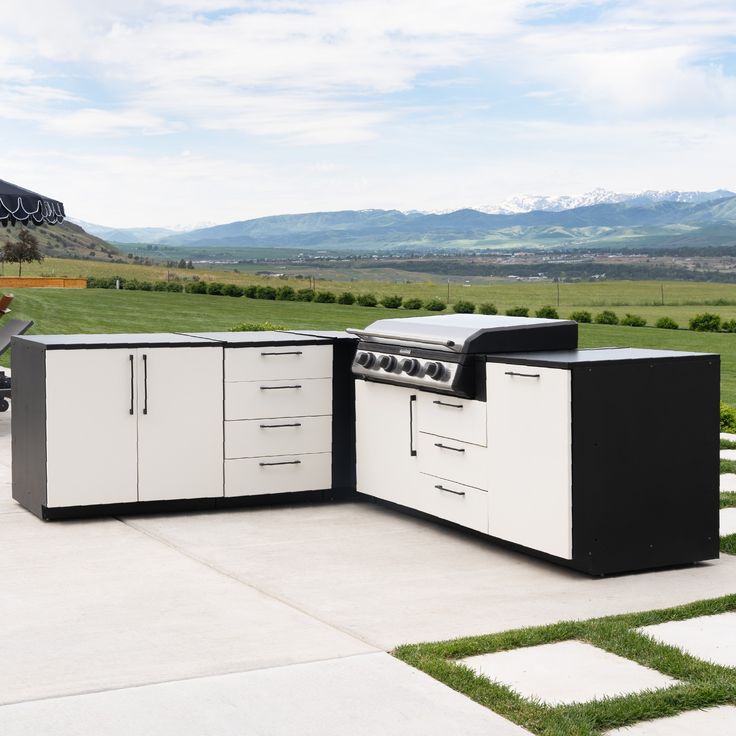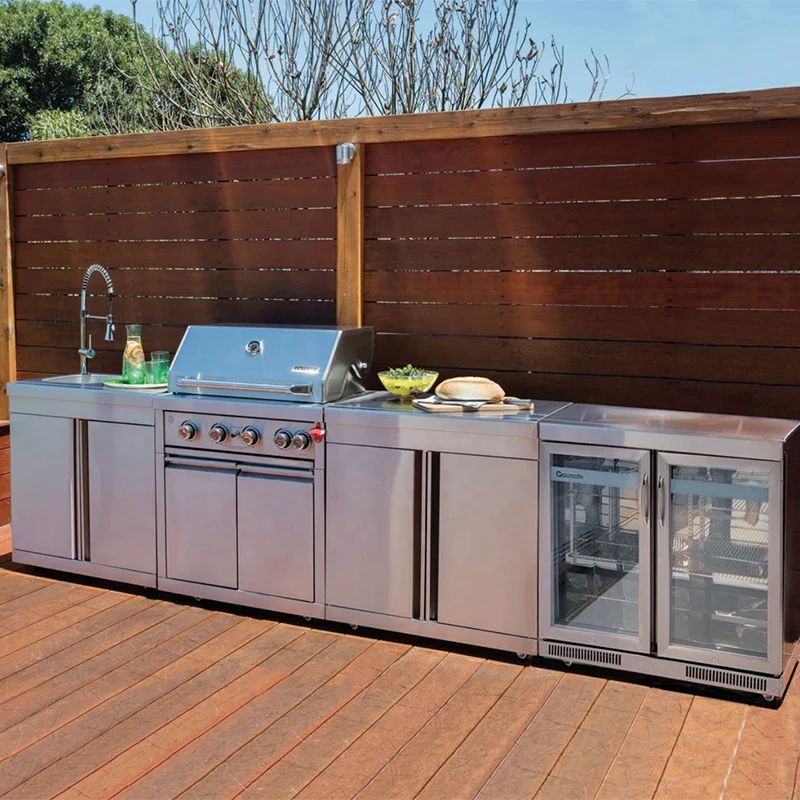Cooking in the wilderness feels different. The smell of grilled food mixing with pine air, the crackle of heat, the silence around—it’s pure freedom. But outdoor grilling brings responsibility too. Every fire, every drop of oil, every bit of trash can change the land you love. Responsible grilling means enjoying the taste of flame-cooked meals while keeping nature safe for everyone.
Responsible grilling in the wilderness means using safe equipment, controlling your fire, storing food properly, and leaving no trace after cooking. It is about more than just safety—it’s about respect for the land, wildlife, and other campers who come after you.
The good news is, with the right tools and habits, you can grill outdoors safely and sustainably. Let’s walk through what it takes to be a responsible outdoor cook—from choosing your spot to cleaning up afterward.
How do you choose the safest location for your grill in the wilderness?
Finding the right place to grill is the first step to protecting nature. The safest locations are flat, open, and away from dry grass, leaves, or low-hanging branches. Always check if the area allows gas or open-flame cooking before you start. Use hard surfaces like gravel, sand, or rock to avoid burning vegetation.
Set your grill at least 15 feet away from tents, trees, and gear. Wind direction matters too—it keeps smoke away from campsites and prevents flare-ups. If the site has a designated cooking area or fire ring, use it. These spots reduce new damage and help contain heat.
Tips for Choosing a Safe Grill Location
| Location Type | Safe to Use? | Reason |
|---|---|---|
| Gravel or rock pad | ✅ | Non-flammable and stable |
| Grass or dry soil | ❌ | Fire risk and soil damage |
| Near trees or tents | ❌ | Dangerous if flame spreads |
| Designated fire ring | ✅ | Designed for heat containment |
A little planning can stop big problems. Responsible grillers respect both rules and surroundings, keeping their cooking spots safe and natural.

What safety checks should you perform before starting your outdoor gas grill?
Before cooking, check your gear. Inspect the gas line for cracks or leaks. If you smell gas or hear hissing, stop and fix the problem before lighting. Tighten all connections and keep your propane tank upright and away from direct heat.
Always test your grill before packing it for the trip. This saves time and prevents frustration in the wilderness. Bring a small fire extinguisher or sand bucket in case of emergencies. Never grill inside a tent or vehicle—carbon monoxide has no smell but can be deadly.
Pre-Grill Safety Checklist
| Safety Step | Why It Matters |
|---|---|
| Check hoses for leaks | Prevents gas fires |
| Secure propane tank | Avoids tipping or leaks |
| Clean grill surface | Stops flare-ups |
| Bring fire control tools | Ensures quick response |
Safe grilling starts long before you light the flame. Taking five minutes for checks can prevent damage, injuries, or worse.

How can you minimize environmental impact while cooking with a portable gas grill?
Grilling in nature should leave no marks behind. Using a gas grill already helps since it burns cleaner than charcoal. To go further, avoid disposable foil trays or plastic tools. Choose reusable or stainless-steel utensils and carry a small waste bag for scraps.
Cook only what you need. This reduces leftovers and prevents food waste, which can attract animals. Store oils and sauces in refillable containers to cut packaging waste. If you cook often, look for propane cylinders that can be refilled instead of thrown away.
Ways to Reduce Impact While Grilling
| Practice | Environmental Benefit |
|---|---|
| Use refillable gas canisters | Less metal waste |
| Bring reusable utensils | No single-use plastics |
| Pre-portion food | Less waste and easier cleanup |
| Grill over existing fire pad | Prevents new soil damage |
Responsible grilling is about small habits that add up. Each smart choice—like reusable containers or minimal packaging—protects the wild for the next visitor.

What are the best practices for food storage and wildlife safety when grilling outdoors?
Wildlife safety starts with smart food storage. Even small food smells can attract animals from far away. Keep everything sealed in odor-proof bags or bear-resistant containers. Store your food at least 10–15 feet above ground and a few feet from tree trunks.
Never leave food unattended. Even a few minutes away can invite unwanted guests. Wash utensils and pans after cooking, and never bury or burn leftovers—it may harm wildlife or soil.
Food Storage Safety Tips
| Method | Purpose |
|---|---|
| Bear-proof canister | Keeps animals out |
| Hanging food bag | Avoids ground scavengers |
| Odor-sealed bags | Reduces scent attraction |
| Clean cookware quickly | Prevents smell spread |
Wildlife depends on natural diets, not human snacks. When you cook responsibly, you help keep them wild and healthy.
How can you manage waste and clean-up to leave no trace after outdoor cooking?
Cleaning up is where responsible grilling proves itself. Everything you bring in must leave with you. Scrape off grease with a paper towel and pack it out. Carry a small container for used cooking oil—it should never be dumped on the ground. Wash dishes at least 200 feet from water sources and use biodegradable soap sparingly.
Scatter your rinse water, don’t pour it in one spot. It helps nature filter it naturally. Strain food bits out before disposal and pack them away with trash.
Simple Leave-No-Trace Cleanup Routine
| Step | Action | Why |
|---|---|---|
| Step 1 | Wipe, don’t rinse, grill first | Saves water |
| Step 2 | Filter dishwater | Removes food scraps |
| Step 3 | Scatter gray water | Prevents pooling |
| Step 4 | Pack out trash | Keeps site clean |
Keeping your campsite as you found it—or cleaner—is the true sign of a good camper.
Which sustainable grill fuels and accessories reduce your outdoor cooking footprint?
The fuel you use matters. Propane and natural gas burn cleaner than charcoal. If possible, choose small refillable gas cylinders or solar-powered stoves. These options reduce emissions and limit waste. Using insulated cookware also lowers fuel use since it retains heat longer.
Avoid lighter fluids—they release chemicals and smell bad. Choose electronic ignition instead. For utensils, stainless steel or bamboo are better choices than disposable plastic.
Comparison of Grill Fuel Options
| Fuel Type | Pros | Cons |
|---|---|---|
| Propane | Clean, easy to control | Needs refilling |
| Charcoal | Flavorful results | Produces smoke, ash |
| Solar grill | Zero emissions | Weather-dependent |
| Dual-fuel | Flexible setup | Slightly heavier |
Eco-friendly grilling doesn’t mean sacrificing flavor. It means cooking smart with equipment that lasts and fuels that burn cleaner.

How should you maintain your gas grill gear for safe and efficient wilderness use?
Grill maintenance matters as much outdoors as at home. After every trip, clean burners, grates, and drip trays. Dirt buildup can block airflow or cause uneven heat. Use a mild brush or baking soda paste to scrub surfaces gently.
Check for rust or corrosion before storage. Moisture is a common problem in outdoor gear. Dry your grill completely before packing. If it’s portable, cover it to prevent scratches or dust buildup. Store propane tanks in a cool, shaded place with caps tightly sealed.
Gas Grill Maintenance Schedule
| Task | Frequency | Benefit |
|---|---|---|
| Inspect gas line | Before every use | Avoids leaks |
| Clean grates | After every cook | Prevents sticking |
| Check ignition | Monthly | Ensures quick start |
| Dry and store covered | Always | Extends lifespan |
Maintaining your gear means fewer replacements, better safety, and more enjoyable cookouts.
What are key tips to plan a low-impact, high-reward outdoor grilling menu?
Planning makes outdoor grilling easier and lighter. Pre-marinate meats or vegetables at home and store them in reusable containers. Stick to simple recipes that need few ingredients and short cooking times. Foods like kebabs, foil-wrapped veggies, and pre-cooked sausages are easy and clean.
Avoid messy sauces or foods that drip heavily. They create sticky residue and attract insects. Plan meals with balanced nutrition too—mix protein, grains, and fresh produce.
Sample Low-Impact Grilling Menu
| Meal | Ingredients | Cook Time |
|---|---|---|
| Breakfast Wrap | Eggs, tortilla, cheese | 10 min |
| Lunch Kebabs | Chicken, veggies, oil | 15 min |
| Dinner Packet | Fish, lemon, herbs, foil | 20 min |
Outdoor grilling should feel enjoyable, not stressful. The simpler your menu, the less waste and cleanup you’ll have to handle.
Conclusion
Responsible grilling in the wilderness is about respect—for fire, for nature, and for safety. Every clean cook station and sealed trash bag helps preserve the wild places we love. By choosing stable surfaces, safe fuels, and reusable tools, you cook smarter and safer. With practice, these habits become second nature, turning every outdoor meal into a small act of care for the planet.
FAQs:
What should you do if your gas grill is tipped over in the wilderness?
If your grill tips, shut off the gas supply immediately, move the unit to a stable area, and inspect for damage or leaks before relighting.
How far should a portable gas grill be from trees and flammable materials?
A gas grill should be at least 10 feet (approx. 3 m) from any combustible surfaces such as trees, overhangs or dry brush. (Petro)
Can you use a gas grill during fire-ban restrictions in the backcountry?
Often you cannot. Fire-ban zones may ban all open-flame or fuel-burning devices. Always check the area regulations before you pack your grill.
How do you check for gas leaks before using a portable grill outdoors?
Use a soap-and-water solution on hoses and connections. Bubbles = leak. Never use a flame test. (Petro)
What is the safest way to cool down and store a gas grill after cooking?
Turn off the burners and gas supply, let the unit cool fully (about 30-60 minutes) before covering or packing, to avoid trapped heat and risk of damage. (F&J Outdoors)
How should waste and grease from outdoor grilling be disposed to protect wildlife?
Wipe grease and food scraps into sealed bags, carry out all trash, do not bury or burn scraps, and rinse cooking areas well away from water sources.
Is it safe to use charcoal alternatives for flavor when grilling in remote areas?
Adding wood chips or small charcoal portions may add flavor, but these increase fire risk and require strict surface and site control to stay within Leave-No-Trace practices.
What utensils and accessories help reduce environmental impact while grilling outdoors?
Reusable metal tongs, long-handled spatulas, refillable oil/sauce containers and a refillable propane cylinder all cut down on single-use waste and minimize pack-out weight.
